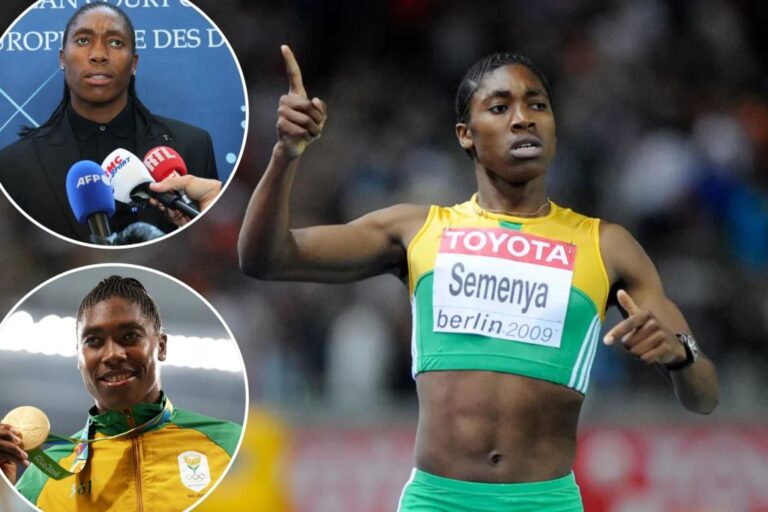Caster Semenya Ends Seven-Year Legal Battle Against Sex Eligibility Rules
Cape Town, South Africa – Olympic champion Caster Semenya has announced the conclusion of her lengthy legal struggle against sex eligibility regulations in track and field, as confirmed by her attorneys on Thursday. This decision follows a significant ruling from the European Court of Human Rights in July, which had resurrected interest in her controversial case.
Legal Journey and Major Rulings
Semenya’s lawyer, Patrick Bracher, stated in an email to The Associated Press that they will not appeal to the Swiss Supreme Court, despite previous expectations. In his words:
"Caster’s legal challenge reached the highest possible court with a highly successful outcome and will not be taken further in the circumstances."
Key Legal Milestones:
-
Initial Legal Challenge: Since 2018, Semenya has fought against the rules imposed by World Athletics, taking her case through several courts, including:
- Court of Arbitration for Sport
- Swiss Federal Tribunal
- European Court of Human Rights
- Recent Developments: In July, the European court ruled that Semenya had not received a fair hearing at the Swiss tribunal, potentially allowing for a continuation of her legal challenge. However, her decision to stop further litigation marks a significant shift.
Career Impact and Controversy
Semenya, a two-time Olympic gold medalist in the 800 meters, has been prohibited from competing in her signature event at major international meets since 2019. This ban was imposed when she refused to undergo hormone therapy to lower her natural testosterone levels.
Why Was Semenya Banned?
- Semenya has consistently argued that the eligibility rules violate her rights and have effectively ended her career at its peak, as she was unbeaten for over 30 races before the restrictions took effect.
- The changes stem from her naturally high testosterone levels, which result from a condition known as Differences in Sex Development (DSD).
Understanding DSD
- Defining DSD: Semenya has XY chromosomes typically associated with male traits but presents with female qualities. These conditions can often lead to confusion in sports, making Semenya’s case particularly polarizing.
- Not Transgender: It’s crucial to note that Semenya is not a transgender athlete; she has identified as female from birth.
Evolving Regulations in Track and Field
Over the years, track and field has strengthened its regulations governing female athletes with elevated testosterone levels. These rules have evolved since 2011, responding directly to Semenya’s emergence as a dominant athlete.
Recent Rule Changes:
- September 2023 Update: New rules, effective September 1, now mandate genetic testing for female athletes to verify the presence of a Y chromosome. Women failing this test are barred from competing in female categories.
Bracher highlighted that the current regulations vary significantly from those Semenya previously contested, and her recent victories may provide groundwork for other athletes seeking to challenge these rules.
Broader Implications Across Sports
Semenya’s monumental case has influenced various sports, triggering changes in eligibility guidelines to address DSD conditions.
- Swimming: Other sports, including swimming, have adopted similar restrictions on women with DSD conditions.
- Boxing: The sport has faced its own controversies, especially involving athlete participation in events like the 2023 Paris Olympics, leading to the introduction of genetic tests in boxing.
Current Landscape
The sex eligibility debate remains contentious, as other athletes like Imane Khelif are also challenging genetic testing requirements.
Conclusion
Caster Semenya’s decision to end her seven-year legal battle marks a significant moment in sports history, highlighting ongoing debates around gender, rights, and fairness in athletics. As sports bodies refine their regulations, history continues to be shaped by high-profile cases like Semenya’s, influencing future contests over eligibility and fairness.
For more on the broader implications of these rulings, see how World Athletics approaches these sensitive issues and the evolving debate throughout different sports.


